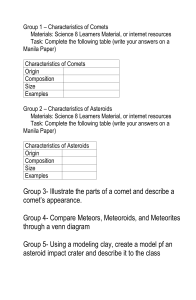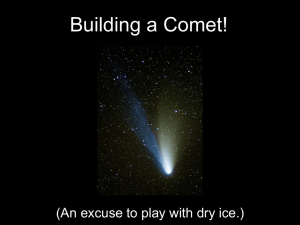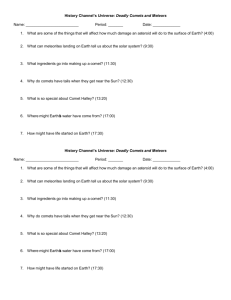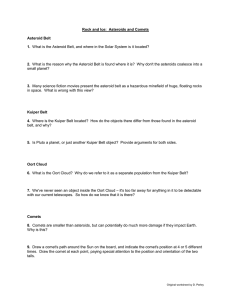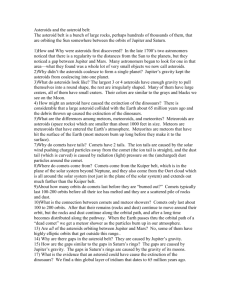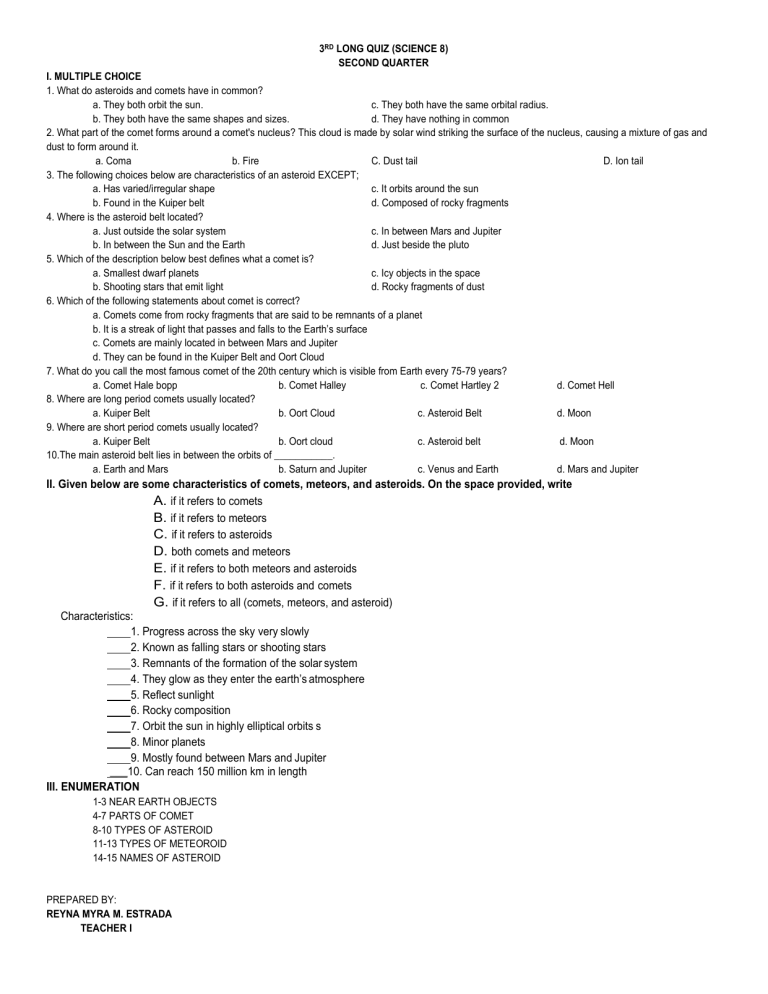
3RD LONG QUIZ (SCIENCE 8) SECOND QUARTER I. MULTIPLE CHOICE 1. What do asteroids and comets have in common? a. They both orbit the sun. c. They both have the same orbital radius. b. They both have the same shapes and sizes. d. They have nothing in common 2. What part of the comet forms around a comet's nucleus? This cloud is made by solar wind striking the surface of the nucleus, causing a mixture of gas and dust to form around it. a. Coma b. Fire C. Dust tail D. Ion tail 3. The following choices below are characteristics of an asteroid EXCEPT; a. Has varied/irregular shape c. It orbits around the sun b. Found in the Kuiper belt d. Composed of rocky fragments 4. Where is the asteroid belt located? a. Just outside the solar system c. In between Mars and Jupiter b. In between the Sun and the Earth d. Just beside the pluto 5. Which of the description below best defines what a comet is? a. Smallest dwarf planets c. Icy objects in the space b. Shooting stars that emit light d. Rocky fragments of dust 6. Which of the following statements about comet is correct? a. Comets come from rocky fragments that are said to be remnants of a planet b. It is a streak of light that passes and falls to the Earth’s surface c. Comets are mainly located in between Mars and Jupiter d. They can be found in the Kuiper Belt and Oort Cloud 7. What do you call the most famous comet of the 20th century which is visible from Earth every 75-79 years? a. Comet Hale bopp b. Comet Halley c. Comet Hartley 2 d. Comet Hell 8. Where are long period comets usually located? a. Kuiper Belt b. Oort Cloud c. Asteroid Belt d. Moon 9. Where are short period comets usually located? a. Kuiper Belt b. Oort cloud c. Asteroid belt d. Moon 10.The main asteroid belt lies in between the orbits of ___________. a. Earth and Mars b. Saturn and Jupiter c. Venus and Earth d. Mars and Jupiter II. Given below are some characteristics of comets, meteors, and asteroids. On the space provided, write A. if it refers to comets B. if it refers to meteors C. if it refers to asteroids D. both comets and meteors E. if it refers to both meteors and asteroids F. if it refers to both asteroids and comets G. if it refers to all (comets, meteors, and asteroid) Characteristics: 1. Progress across the sky very slowly 2. Known as falling stars or shooting stars 3. Remnants of the formation of the solar system 4. They glow as they enter the earth’s atmosphere 5. Reflect sunlight 6. Rocky composition 7. Orbit the sun in highly elliptical orbits s 8. Minor planets 9. Mostly found between Mars and Jupiter ___10. Can reach 150 million km in length III. ENUMERATION 1-3 NEAR EARTH OBJECTS 4-7 PARTS OF COMET 8-10 TYPES OF ASTEROID 11-13 TYPES OF METEOROID 14-15 NAMES OF ASTEROID PREPARED BY: REYNA MYRA M. ESTRADA TEACHER I
